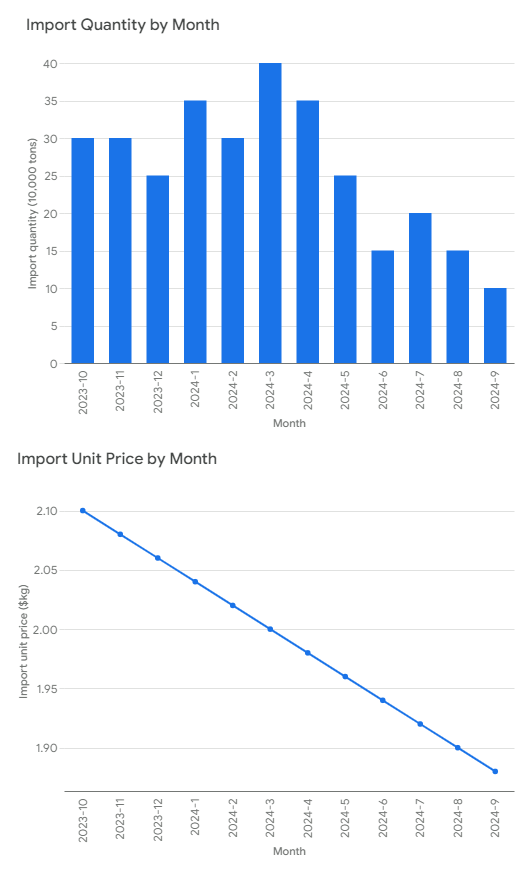China's cotton imports stumble amidst domestic revival

China, a major player in the global cotton market, has been steadily reducing its cotton imports in recent years. This shift in demand has far-reaching implications for major exporting countries, prompting them to explore alternative markets and adjust their production strategies.
This fall is due to several factors, including the strengthening of domestic cotton market and a narrowing price gap between domestic and foreign cotton.
Pointers
Sharp decline in imports: China's cotton imports fell 20 per cent month-on-month 50.3 per cent year-on-year in September 2024. China's economic slowdown too has impacted various sectors, including the textile industry, leading to reduced demand for cotton. The trade tensions between China and the US have created uncertainty in the global trade environment, affecting cotton trade.
Dominance of Australian cotton: Australia remained the top supplier, accounting for 53 per cent of China's cotton imports.
Narrowing price gap: The price difference between domestic and foreign cotton reduced, making imports less attractive.
Domestic market revival: A package of incremental policies announced in September boosted market confidence and stimulated demand for cotton textiles. Meanwhile, China has been focusing on increasing its domestic cotton production to meet its growing textile industry needs.
Inventory reduction: Both raw material and finished product inventories decreased, indicating improved demand.
Table: Import volume and price trends (Oct 2023 - Sep 2024)
|
Month |
Import quantity (10,000 tons) |
Import unit price ($kg) |
|
2023-10 |
30 |
2.1 |
|
2023-11 |
30 |
2.08 |
|
2023-12 |
25 |
2.06 |
|
2024-1 |
35 |
2.04 |
|
2024-2 |
30 |
2.02 |
|
2024-3 |
40 |
2 |
|
2024-4 |
35 |
1.98 |
|
2024-5 |
25 |
1.96 |
|
2024-6 |
15 |
1.94 |
|
2024-7 |
20 |
1.92 |
|
2024-8 |
15 |
1.9 |
|
2024-9 |
10 |
1.88 |
China’s cotton import reduction has greatly affected exporting nations including India. Reduced demand from China has led to a surplus of cotton in the global market, putting downward pressure on prices. This has adversely affected the livelihoods of farmers and workers in cotton-producing countries. For example, the US, once a major supplier of cotton to China, has witnessed a significant decline in its exports. The trade tensions between the two countries further exacerbated the situation. India, another major cotton exporter, has also been impacted by China's reduced demand. However, India has been diversifying its export markets to mitigate the impact. Brazil, a rising cotton powerhouse, has benefited from China's reduced demand by increasing its exports to other countries.
Way forward for exporting countries
To cope with reduced demand from China exporting countries need to diversify their markets to reduce dependence on China. Focusing on value addition through processing and manufacturing can help boost exports and improve profitability. Adopting advanced technologies too can enhance productivity and reduce costs. Promoting sustainable cotton production can attract environmentally conscious consumers.
The bottomline is China's changing cotton import landscape presents both challenges and opportunities for major exporting countries. By adapting to the new realities and implementing strategic measures, these countries can navigate the evolving global cotton market.
